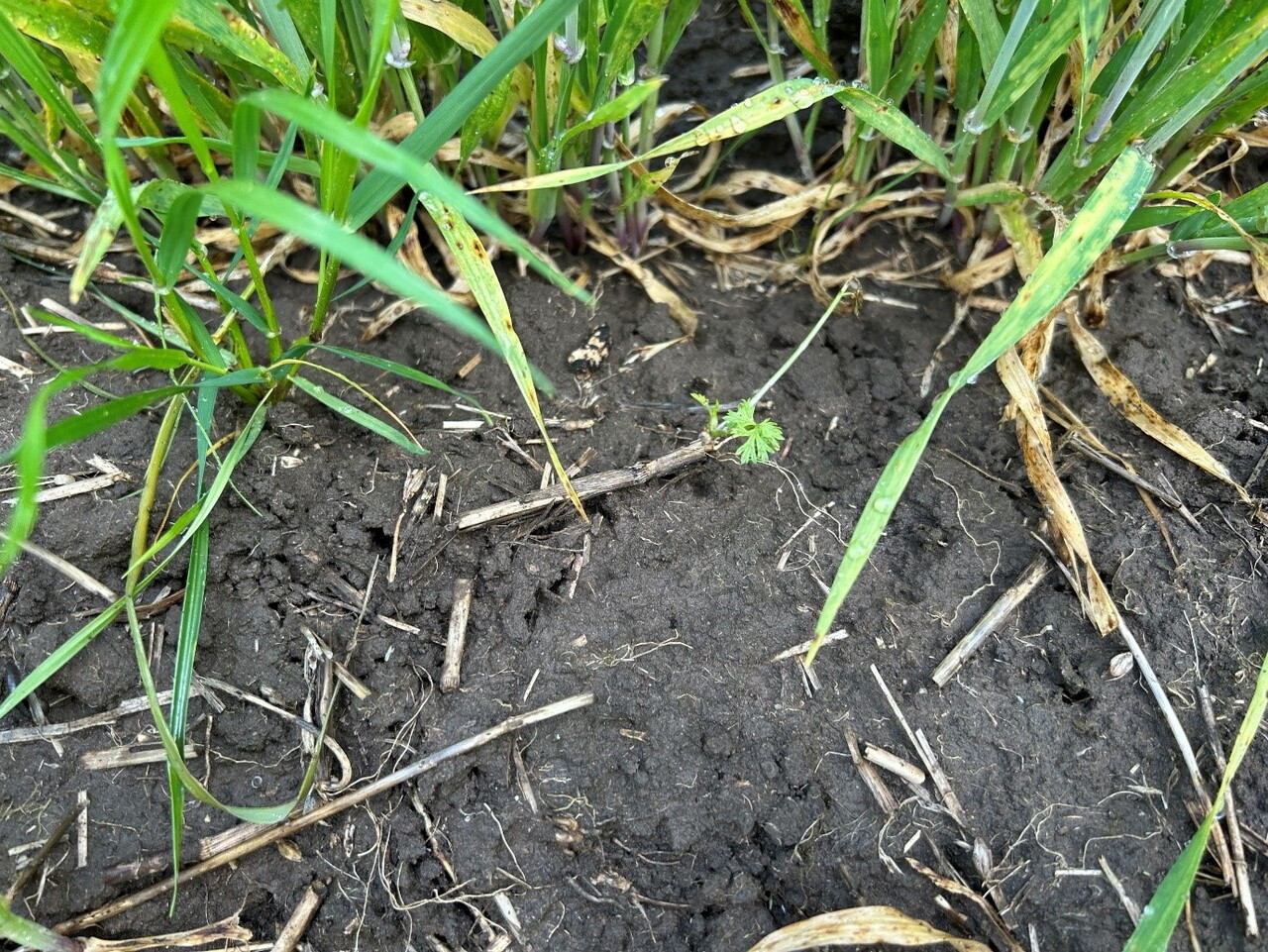
Broadleaf herbicide mixes boost weed control in cereals

Paul Castor, Director with Michael Castor and Associates, says in winter cereal crops in Northern NSW and Southern QLD, Priority® is increasingly being used with picloram and MCPA herbicide applications.
INCREASING herbicide tank mix options against broadleaf weeds in cereal crops is improving flexibility and weed control for growers, while the registration of additional mixing partners and target weeds also has further broadened the control spectrum.
The Group 2 post-emergent herbicide, Priority®, is boosting weed control from a range of broadleaf herbicides and now can be applied alone or in tank mixes against the key weed, bifora, as well as against volunteer pulses in fallows.
Developed by ADAMA Australia, Priority contains florasulam, an acetolactate synthase (ALS) inhibitor, in a suspension concentrate formulation and once absorbed via weed foliage, it is translocated to the growing points via the xylem and phloem. It controls around 60 weeds and has the added benefit of good crop safety for following crops.
Steve Fischer, Market Development Manager with ADAMA Australia in Victoria, said Priority had shown strong capability to be mixed with various herbicides for improved control of key broadleaf weeds in cereals, including volunteer pulses, wild radish and other brassica weeds.
“Priority can now be applied in a tank mix with Affinity® Force and MCPA 750 herbicides without a wetter. This mix also can be used to target the difficult bifora weed, which is more prevalent around Horsham, as can new tank mixes with Quadrant® and Triathlon® herbicides,” Steve said.
“Compared with other contact herbicides, Priority is systemic and can improve bifora control, especially when there is some shading from the crop or other weeds when spraying.”
Andrew Parkinson, Agronomist with Nutrien at Riverton in the Mid North region of South Australia, said Priority’s application with tank mix partners was, importantly, adding another mode of action and achieving the required level of weed control.
He said this had been highlighted with good control of weeds such as bedstraw and wild vetch, whilst targeting other major broadleaf weeds in wheat, barley, oats and durum wheat crops, including Indian hedge mustard, charlock, volunteer pulses and canola.
“It has a wide weed control spectrum, is competitively priced, making it particularly attractive in drier areas, it is soft on crops in terms of phytotoxicity and it can be used over a range of crop growth stages, so we are very happy with it,” Andrew said.
Picturedshows the control provided by a tank-mix application of Priority® and Quadrant® post-emergent herbicides in an ADAMA Australia trial near Roseworthy in SA.
“It’s also very compatible with a range of fungicides and insecticides, and it has a short plantback profile, which allows good re-cropping flexibility for growers.”
Paul Castor, with Northern New South Wales and Southern Queensland consultancy group, Michael Castor and Associates (MCA), said the scheduled use of residual herbicides had become a critical component of fallow weed management in the region.
“This has provided much better management of fallow weeds with resistance to key fallow knockdown herbicides. However, fallow residuals will never manage the full spectrum of fallow weeds. One key weed group which is not well managed with fallow residuals is volunteer legumes. Chickpeas are our most common grain legume, but growers can also be chasing volunteers of faba bean and mungbean,” Paul said.
“Traditionally, metsulfuron herbicide mixtures have been used for management of volunteer legumes. However, it can hang around on our high pH soils, particularly in dry conditions, and that can create problems with re-cropping intervals. Summer crops have particularly long re-cropping intervals following the use of metsulfuron. It can throw things out of whack.”
He said the industry had needed fallow herbicide options with shorter residual control than metsulfuron and it had fortunately arrived in the form of the tank-mix partner, Priority, which had proved ideal in mixes with glyphosate and fluroxypyr.
“It offers a nice weed control spectrum, it works well with fluroxypyr for other weeds, we know it’s very active on volunteer legumes and it’s a lot easier to use than other herbicides over summer.”
“It also mixes well with glyphosate and does not impact glyphosate activity on other target weeds.”
Paul said Priority also had provided another option to reduce the use of phenoxy herbicides in northern fallow knockdown programs.
“Off-target drift of phenoxys is a particular concern over summer in cotton growing regions.”
He said in winter cereal crops, Priority was increasingly being used with picloram and MCPA herbicide applications.
“Sowthistle is a key target and metsulfuron was previously used in these mixes to broaden the weed control spectrum, however varietal crop tolerance work has shown it can be risky. Priority, however, appears safer to use in-crop, as well as having the much shorter period for re-cropping.”
Jim O’Connor, Market Development Manager with ADAMA Australia in Southern Queensland, said in winter cereals, post-emergent tank mixes of LVE MCPA and Priority, and in some cases Picoflex® (picloram) or Flagship™ (fluroxypyr), also were targeting brassica weeds as well as volunteer pulses.
“Priority is good on radish and turnips and the control spectrum also includes Mexican poppy, climbing buckwheat and sowthistle. We don’t have much Group 2-resistant wild radish, so Priority has very good efficacy on these weeds, however we still have to carefully manage our Group 2 applications,” Jim said.
He said Priority was an ideal spike with LVE MCPA tank mixes to broaden the weed control spectrum without compromising plantback flexibility.
“LVE MCPA and Picoflex is a popular mix where growers also may be comfortable with the plantback – and Priority won’t alter that. If growers are conscious of re-cropping intervals and the ability for double cropping, Priority is a great fit with their post-emergent herbicide mixes.”
For further information on the use of Priority post-emergent herbicide as a tank-mix partner against broadleaf weeds in cereal crops, growers can contact their local ADAMA Australia representative or visit ADAMA.com.
Media Contact:
Holly Hartley | Marketing Campaign Manager | D: 0473 210 903 |
